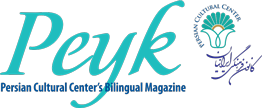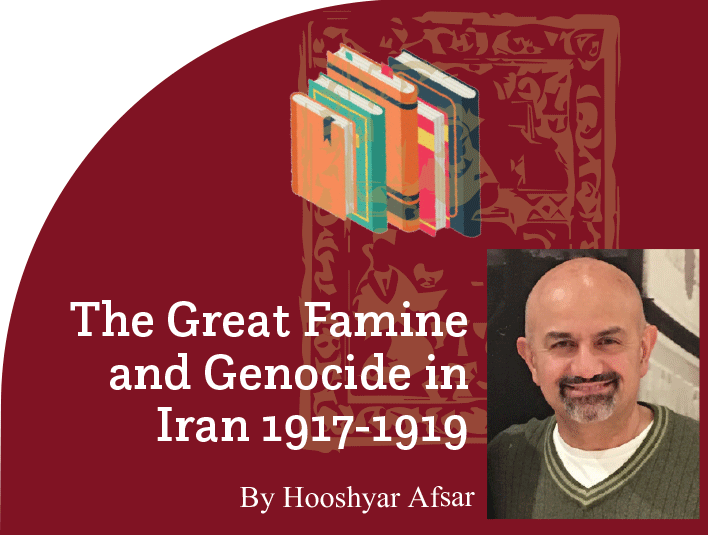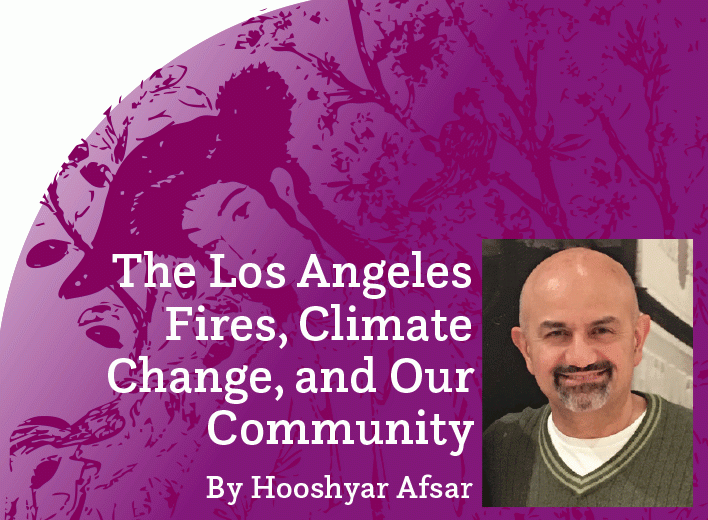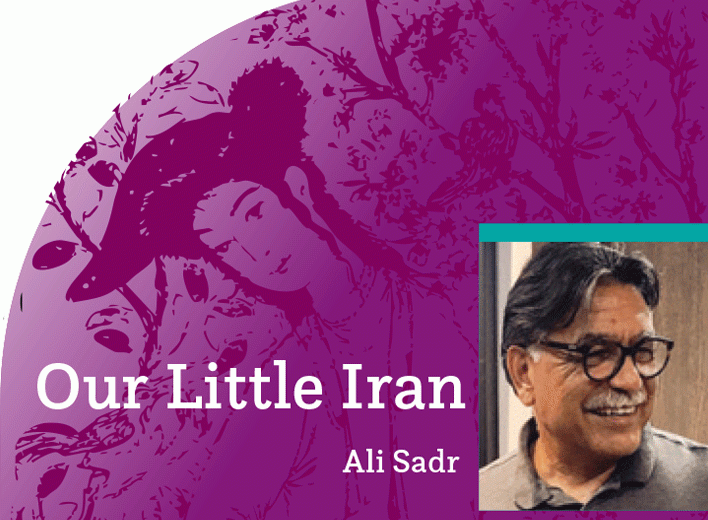Book Review: The Great Famine and Genocide in Iran 1917-1919
Second Edition, by Mohammad Gholi Majd
Hooshyar Afsar
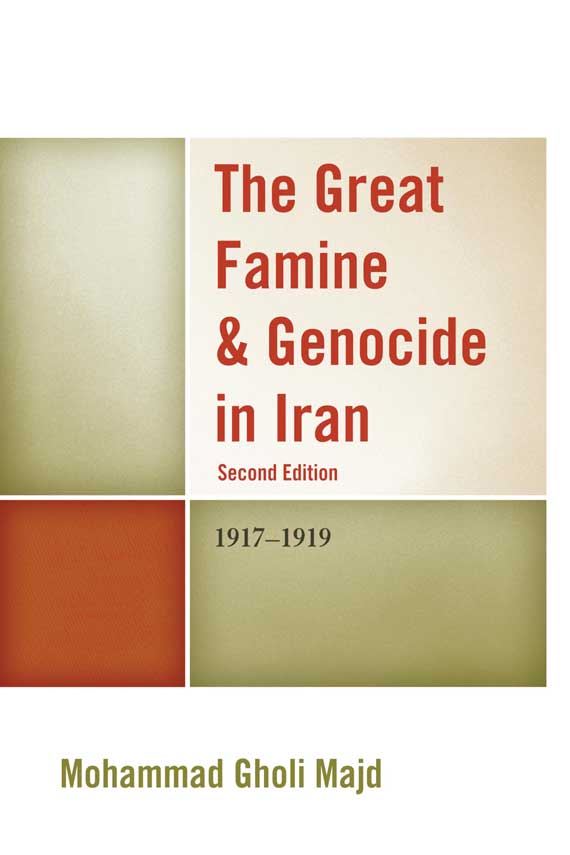 Introduction
Introduction
You may have never heard of the Great Famine of 1917-1919 in Iran, yet Mohammad Gholi Majd has spent many years researching and documenting this calamity of early twentieth century Iran; the second edition of his book presents substantial evidence and analysis that makes it very uncomfortable to digest or ignore.
Majd starts the book by claiming that the Great Famine of 1917-1919 “was the greatest calamity in the history of Iran” during which 8-10 million Iranians (out of the whole population of 18-20 million) died. [1] The author states that—except for one mention in a 1934 biography of Lord Curzon, the British Foreign Secretary at the time of the famine, and a memorandum of August 1941 by Wallace Smith Murray, Chief of the Division of Near Eastern Affairs at the United States State Department—the Great Famine was relegated to oblivion. [1] Murray’s memorandum states that: “During the famine … approximately one-third of the population perished.” [1] Considering that almost all estimates of the post World War I population of Iran is at about or more than 10 million, Murray’s statement implies that at least 5 million Iranians perished. In fact, the author states that an earlier report by Murray in 1925, with the same claim of the number who died, sparked his interest and a “careful search of the records of the Department of State for Iran during 1914-1919” was a revelation. [1]
There has been research beyond Majd’s book, and perhaps spawned by the first edition of his book published in 2003, about the Great Famine, with many calling it the Great Persian Famine (GPF), and some have made attempts to analyze why it has not been addressed and most Iranians are not aware of it. [2]
Regardless, the purpose of this article is to introduce the book and show that the lessons of this traumatic calamity for the Iranian community worldwide are timeless, and it is of utter importance at the present moment.
Historical Account—Majd’s Sources During World War I and the Great Famine
The author used multiple sources, mainly U.S. State Department records on Iran from 1914-1918 that were made available as a result of a request under the Freedom of Information Act; reports by American missionaries from different cities in Iran; memoirs of British Major General Dunstersville’s book, The Adventures of Dunsterforce, the head of the military force by the same name in Iran; British Major General Dickson, Inspector General of British forces in Iran; British Major Donahoe, a war correspondent; numerous reports by Iranian newspapers including Iran, Raad, and Bahar-no; and, last but not the least, memoirs of the Iranian elite and former prime ministers. Majd believes that there is a clear censorship by the British on the topic to avoid responsibility since he could only find references to the famine in Duntersforce’s and Donahoe’s memoirs published in 1920 and 1919, respectively, and none in Dickson’s memoirs published in 1924 and afterwards. Considering the acute attention to documentation by the authorities of the British Empire and the fact that—after the exit of Ottoman and Russian forces from Iran by early 1918—British forces were the sole invading force in Iran, this claim of the author is credible and opens the door for further historical and academic research.
World War I broke out in July 1914 and the government of Iran declared its neutrality. The powers at war—mainly the British Empire and Imperial Russia—who, in two consecutive pacts in August 1907 and March 1915, had divided Iran into three and then two spheres of influence, completely ignored Iran’s neutrality and invaded the country. Ottoman Empire forces also invaded the northwest of Iran. [1]
The author goes through massive detail and sources to show the destruction caused by the invasion of Iran by Imperial Russia, the Ottoman Empire, and the British Empire. The book presents substantial evidence from the British that they focused on purchasing grain in both Iran and Iraq to open up shipping space for the empire’s other needs. [3] The drought of 1916, the purchase of grain by the British and Russians, and the destruction and looting by invading forces, along with hoarding by profiteers who found the invaders’ purchases profitable, caused the breakout of the famine in 1917.
The book provides clear evidence of grain purchases by the British from Duntersville’s memoir and memos regarding the “Mesopotamia Department of Local Resources.” [4] In addition to the role of invading forces and especially the British in all parts of Iran, the example of what took place in Rasht (Gilan province) after Russia’s departure and the British invasion is of notable importance. The book shows that up until the British invasion of Rasht, that city had stayed immune from the ravages of the famine. The Jangali movement in Gilan had helped the situation, but after the arrival of the British, the famine broke out in Rasht, when the invading forces purchased significant rice and other foodstuff to be shipped to the British forces in Baku, Azerbaijan, in the north. [5]
One would ask: if the British have nothing to hide, why don’t they end the censorship and let the world know what they did during the 1917-1919 famine in Iran? The academic community in Britain and worldwide could and should push for that.
Unprecedented Population Decline
Majd estimates that 8-10 million Iranians perished during the GPF. There was also a major breakout of cholera and then the misnamed Spanish flu in 2018 that took many lives. Weakened immune systems in the starving population were no match for those killer epidemics.
There were no official censuses in Iran except the one in Tehran in 1867. In that year, Naser ed-Din Shah of the Qajar dynasty ordered a census of Tehran. The results showed that 147,256 people lived in Tehran. [6] There was another major famine in Iran in 1871-1872, yet considering the overall population growth in the world, including in Iran between 1872 and 1917, Majd estimates Tehran’s population to be 500,000 at the onset of the Great Famine. He analyzes multiple sources in Chapter 4 of his book and shows that several “backward estimations” and “retrogression” methods used did not even mention the 1917-1919 famine. He then analyzes one estimate by Gad G. Gilbar in 1976 that arrived at a population figure of about 10 million for the whole country in 1900, assuming a zero population growth between 1850-1900. Two other estimates by British and Russian researchers put the population of Iran in 1910 at ten million. The author then points out that, during the sixty-year period 1850-1910, the population of the world grew from 1.2 billion to 1.8 billion, which by itself makes such assumptions of zero population growth in Iran unreasonable and even suspect. Majd also goes through great detail to look at other assumptions about significant urbanization, labor-related immigration to Russia, and other factors to make his case. [7]
The author uses American reports on the population of Iran, including those from well-known Morgan Schuster and his successor, Arthur Millspaugh, to show that the population of Iran was higher than the other estimates. Finally, he uses daily bread consumption in Tehran and voter participation in the fourth parliamentary (Majles) elections to show that the population of Tehran was at least 500,000 at the onset of the Great Famine and was reduced to 200,000 afterward. It’s noteworthy that Majd was not even aware of the 1867 census of Tehran mentioned earlier. That number would have further supported his assumptions and conclusions. [8] The author concludes that at the start of the famine, the population of Iran was between 18 to 20 million and the estimates of 1919 demonstrate that 8-10 million people (40 to 50%) perished as a result of famine.
Food Deprivation and Financial Strangulation
Majd provides significant evidence of the British grain purchases to open up shipping space.
There is also credible evidence provided that the British Empire blocked trade with present-day Iraq in the east. The author points out that while Iran was burning in the flames of the Great Famine, the British empire in the east (India and present day Afghanistan and Pakistan) and in the west (present day Iraq) did not suffer from famine and plenty of food was available. At the same time, American diplomatic reports showed that the British used the “Mesopotamia Department of Local Resources” to purchase 500,000 tons of food in western Iran during the height of the Great Famine. As if large purchases of local grain and other food were not enough, Majd also shows that the British blocked the importation of food from the United States. [9]
The British Empire and Imperial Russia had a commitment to pay Iran the customs revenue since they controlled the borders and ports all over the country. This amounted to £30,000 (British Pound) on a monthly basis. The book shows that the Great Famine was accompanied with hyper inflation and high demand for Iranian coinage by the invading troops to pay their troops in silver; the Keran (Gheran) significantly appreciated and British Pound and Russian Ruble lost their value. Iran demanded that the payments be made in Keran instead and the British refused. It was not until August 1918 that monthly payments by the British were restored. At the same time, the British were making substantial oil revenue through Anglo-Persian Oil Company (APOC), of which the British government was the majority shareholder. Based on the revenue figures of APOC and Iran’s share of these revenues, according to the 1901 D’Arcy oil agreement, Majd estimates that Iran’s share would have come to 2 million British Pounds between 1915-1919. The British government used the 1915 sabotage of the pipeline to avoid paying Iran. The British government claimed that they spent £400,000 to repair the pipeline the same year and withheld payments to Iran until after the 1921 coup by Reza Khan, who later in 1925 founded the Pahlavi dynasty. The author then shows, via a 1952 World Bank report, that the actual damage was about £20,000. In other words, the British used an excuse to withhold tens of millions of dollars in Iranian oil revenue during the Great Famine. [10]
The author’s arguments on the British being partly responsible for the onslaught of the Great Famine and then solely responsible for its continuation since they became the only invader are reasonable. Also, it is clear from many quotations in the book that the British Empire attempted to blame others for the famine and portray itself as a savior. Causing a famine in a neutral country during an international conflict is at least a war crime and a crime against humanity. Does it amount to genocide? The author needs to make a solid argument about this. Considering that no genocide convention existed back then, Majd could have used the provisions of the Genocide Convention to make a case retroactively.
Blaming Others as Part of Othering?
Is “relegation to oblivion” and censoring historical records by the British government part of othering and dehumanization of Iranians? Was the support for Reza Shah by the British part of the “relegation to oblivion”? While observing the scenes of the dead bodies abandoned on the roadside and starving Iranians on the verge of death themselves walking by, the British general Duntersville writes, “[n]obody could endure such scenes if he were not endowed with the wonderful apathy of the Oriental” as if it is something less human about Iranians (“Orientals”) who could walk by a dead body in the middle of a Great Famine while on the verge of death themselves. [11] How about extreme hunger and destitution affecting people rather than their race or nationality? What about the responsibility of the forces of the British empire for invading a neutral country, purchasing its badly-needed grain for the use of its troops, depriving it of its natural revenues, and blocking its trade?
Ending Notes and Lessons for Our Community Today
Reading Majd’s book and going through detailed accounts of eyewitnesses of utter devastation and human misery in my country of birth and then writing this piece were perhaps the most difficult reading and writing exercises I have ever experienced. I knew of the Great Famine from vague memories of my father and other relatives, but never encountered the level of the national catastrophe the people of Iran endured.
While Majd has a solid body of facts and strong arguments, his style of authorship does not help his overall argument. Most of the book uses long quotations from the sources. While the quotes are helpful and at the same time graphic and heart wrenching, the author could have focused more on his arguments and effectively used shorter quotations. Another thing missing is a strong prologue, where the author could further emphasize his reasoning and call for more academic work, honoring the millions who perished and the survivors and demanding removal of the archival censorship by the British.
What are the lessons of the Great Famine of 1917-1919 for us today? This is a time of high uncertainty in the world and especially in the Middle East. Our community worldwide and specifically in Iran could be seriously affected in the coming years. The unpredictability of the new U.S. administration will add to this possibility. While President-elect Trump has made promises to end wars in Ukraine and the Middle East, it is not clear how exactly his administration will bring about that end. Our community should hold his administration to account on that promise.
There is no doubt that the Great Famine of 1917-1919 paved the way for a “Strong Man” to emerge in Reza Khan as the leader of the 1921 coup and later as the founder of the Pahlavi dynasty. Was the famine orchestrated by the British to pave the way for Reza Shah’s reign as Majd suggests? Or was the Great Famine the result of the British colonial policies and the coming to power of Reza Shah an outcome they welcomed later? If there are any doubts that the history of the early twentieth century could be repeated in the twenty-first century, the 2003 U.S. invasion of Iraq and utter destruction of that country should be a good reminder that such calamities could happen today. A major war with Iran could bring about years of catastrophe comparable to the Great Famine of 1917-1919 and again push back the development of Iran and any possibility of democracy and human rights in that country for decades. A U.S. war with Iran would undoubtedly have a negative impact on our Iranian community in the U.S., paving the way for severe curtailment of our rights, as the example of Japanese Internment during World War II has shown. [11] Unity in our community, and standing for peace, democracy, and human rights in the Middle East and everywhere in the world, are actionable lessons of the Great Famine of 1917-1919 today.
References:
__________________________________________________
[1] – Majd, Mohammad Gholi. The Great Famine and Genocide in Iran, Second Edition, 1917-1919, University Press of America, pp. 1-5, 18 (2024).
[2] – Edalati, Z., & Imani, M. Imperial Wars and the Violence of Hunger: Remembering and Forgetting the Great Persian Famine 1917–1919. Third World Quarterly, 45(2), 350–366. (2023) https://doi.org/10.1080/01436597.2023.2221183
[3] – Majd, Mohammad Gholi. The Great Famine and Genocide in Iran, Second Edition, 1917-1919. University Press of America, pp. 82-83, 86, 88-89 (2024).
[4] – Majd, Mohammad Gholi. The Great Famine and Genocide in Iran, Second Edition, 1917-1919. University Press of America, p. 82 (2024).
[5] – Majd, Mohammad Gholi. The Great Famine and Genocide in Iran, Second Edition, 1917-1919. University Press of America, pp. 104-107 (2024).
[6] – Baghoolizadeh, Beeta. The Color Black: Enslavement and Erasure in Iran. Duke University Press, p. 27 (2024).
[7] – Majd, Mohammad Gholi. The Great Famine and Genocide in Iran, Second Edition, 1917-1919. University Press of America, pp. 72-76 (2024).
[8] – Majd, Mohammad Gholi. The Great Famine and Genocide in Iran, Second Edition, 1917-1919, University Press of America, pp. 78-79 (2024).
[9] – Majd, Mohammad Gholi. The Great Famine and Genocide in Iran, Second Edition, 1917-1919, University Press of America, pp. 95-103 (2024).
[10] – Majd, Mohammad Gholi, The Great Famine and Genocide in Iran, Second Edition, 1917-1919, University Press of America, pp. 140-141 (2024).
[11] – https://peykmagazine.com/en/2024/07/04/how-can-presidential-executive-orders-negatively-impact-our-community/
